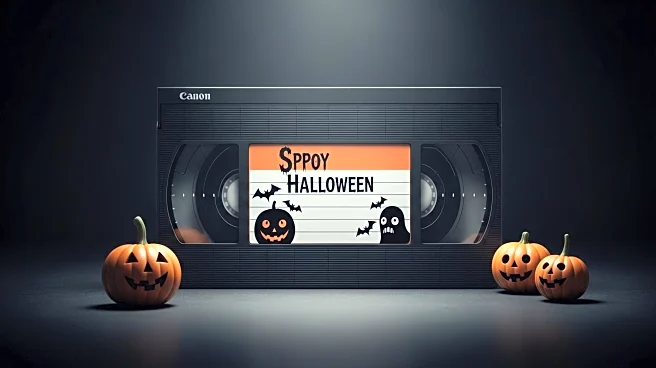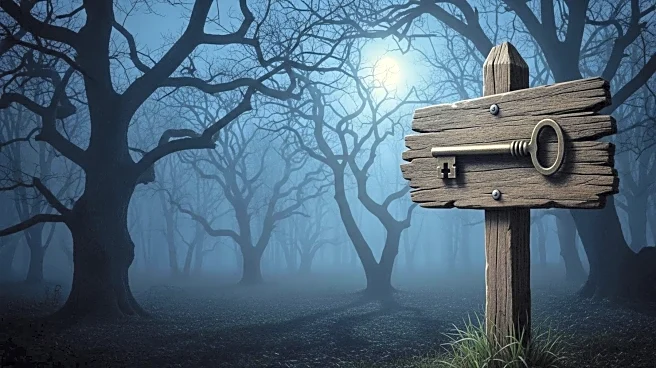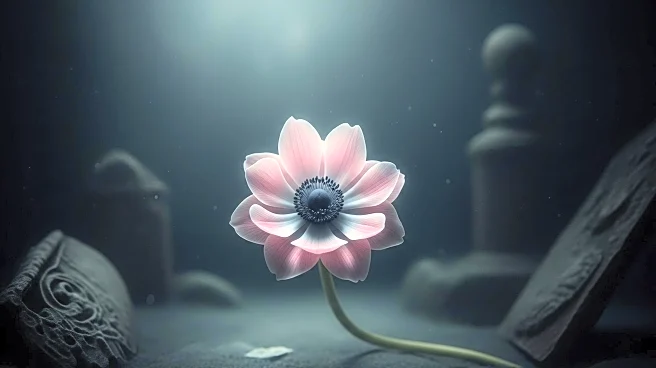What is the story about?
What's Happening?
Ronan Day-Lewis, known for his evocative paintings, has made his directorial debut with the film 'Anemone'. The film opens with a childlike drawing depicting the historical conflict known as the Troubles in Northern Ireland. This visual storytelling is a hallmark of Day-Lewis's work, which often features otherworldly and haunting imagery. The film stars his father, Daniel Day-Lewis, and explores themes of brotherhood and personal history. The narrative follows Ray, played by Daniel Day-Lewis, as he confronts his past and familial relationships. The film premiered at the 63rd New York Film Festival and is noted for its minimal dialogue, relying heavily on visual cues to convey the story.
Why It's Important?
The release of 'Anemone' marks a significant moment in the intersection of visual art and film, showcasing how artistic vision can translate across mediums. Ronan Day-Lewis's approach to filmmaking, influenced by his painting background, offers a unique narrative style that emphasizes visual storytelling over traditional dialogue. This could influence future filmmakers to explore similar cross-disciplinary approaches. Additionally, the collaboration with his father, a renowned actor, highlights the potential for familial partnerships in creative projects, potentially inspiring other artists to explore personal connections in their work.
What's Next?
Following the release of 'Anemone', Ronan Day-Lewis has expressed interest in pursuing further film projects. His experience in both painting and filmmaking suggests that future works may continue to blend these disciplines, potentially leading to innovative storytelling techniques. The film's reception could also encourage other artists to explore filmmaking as a medium for their visual narratives. As 'Anemone' gains attention, it may spark discussions on the role of visual art in cinema and the ways in which personal and historical narratives can be depicted through film.
Beyond the Headlines
The film 'Anemone' delves into the psychological and emotional landscapes of its characters, using surreal and supernatural elements to explore themes of memory and identity. This approach reflects broader cultural and artistic trends that seek to address complex human experiences through abstract and symbolic means. The film's depiction of the Troubles also contributes to ongoing conversations about historical memory and the ways in which art can engage with and interpret past conflicts. As such, 'Anemone' not only entertains but also invites viewers to reflect on the deeper implications of its narrative and visual style.
AI Generated Content
Do you find this article useful?













